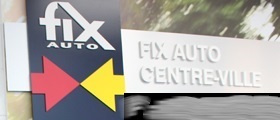Most road
accidents occurred due to the human error.
Advanced driver-assistance systems are systems
developed to automate, adapt and enhance vehicle systems for safety and better driving.
The automated system which is provided by ADAS to the vehicle is proven to reduce road
fatalities, by minimizing the human error. Safety features are designed to
avoid collisions and accidents by offering technologies that alert the driver to
potential problems, or to avoid collisions by implementing safeguards and taking over control
of the vehicle.
| Some Adaptive features may include : |
- Automatic Light Control
- Provide Adaptive Cruise Control
- Collision Avoidance
- Pedestrian Crash Avoidance Mitigation (PCAM)
- Incorporate Satnav/Traffic Warnings
- Connect to Smartphones
- Alert Driver to Other Cars or Dangers
- Lane Departure Warning System
- Automatic Lane Centering
- Show What Is In Blind Spots
| An increasing number of modern vehicles have advanced driver-assistance systems such as: |
- Electronic Stability Control
- Anti-Lock Brakes
- Lane Departure Warning
- Adaptive Cruise Control
- Traction Control
IMPORTANT:
These systems can be affected by mechanical alignment adjustments.
This has led many manufacturers to require electronic resets for these systems, before a mechanical alignment is
performed, ensure that the wheel aligner, you are considering, will meet all the safety requirements.
| There are many forms of ADAS available, some features are built into cars or are available as an add-on package.
Also, there are aftermarket solutions available. |
| ADAS relies on inputs from multiple data sources, including : |
- Automotive Imaging
- LiDAR
- Radar
- Image Processing
- Computer Vision
- in-Car Networking
| Additional inputs are possible from other sources separate
from the primary vehicle platform, such as : |
- Other Vehicles, referred to as Vehicle-to-vehicle (V2V)
- Vehicle-to-Infrastructure (such as Mobile Telephony or Wifi Data Network) systems
While the debate around pre-scanning and post-scanning rages on, there is a step that often gets overlooked
in the repair process.
This step is just as, if not more, important as pre-scanning and post-scanning.
Post-repair calibration, or aiming, is essential for many of today’s advanced driver assist systems (ADAS) to function
properly.
Failing to perform the OEM ADAS calibration/aiming procedures compromises complete, safe and quality repairs.
Post-repair calibration often gets incorrectly lumped in with the post-scanning debate.
While performing a post-scan may
be sufficient for some systems, there are many that require significantly more steps than simply
hooking up a scan tool and clearing codes. |
| Windshield and/or Camera Replacement |
orange
A camera mounted a couple of millimeters too high or at an angle a few degrees off could be detrimental
to the accuracy of adaptive cruise control, collision braking, lane-keep assist, or other collision mitigation systems.
Vehicle makers have precise steps that are required for many of today’s ADAS parts.
They also have explicit parameters for when an ADAS part requires calibration/aiming.
There are undoubtedly many stories about improper calibration/alignments causing issues, many of them
likely true.
Example :
An improper calibration/aiming
on a late-model vehicle, equipped with collision
braking, was repaired, but the camera wasn’t calibrated/aimed properly, instead the camera ended up pointing
upwards just a few degrees.
While a few degrees may not seem to be much of a problem, and is not even detectable by most human eyes,
angle errors multiply in magnitude as cameras project out a few hundred feet in front of the vehicle.
So the vehicle travels towards an overpass, the system sees the road above, believes it to be a vehicle,
and engages the brakes; all because the camera was aimed too high. |
It isn’t just cameras that require calibration.
Many distance-sensing sensors
also require calibration following removal or replacement. The process is performed to “teach” the sensor
how far objects are from the sensor.
If a parallel-parking sensor doesn’t recognize 1 millimeter versus 1
meter, there is a chance the vehicle could parallel-park itself right into another vehicle. |
There are a number of situations that vehicle makers will require calibration/aiming on ADAS parts and systems.
That criteria isn’t always limited to part replacement.
There are many instances where
calibration/aiming is required :
- if the camera or sensor is removed and installed
- if the mounting location is damaged
- if the the tire size changes
- if a wheel alignment is performed
- if the the windshield is replaced
Just because the camera or sensor doesn’t require replacement, and even if it’s not damaged, there are many
cases where calibration/aiming is still required — yes, required. |
 |
Copyright 2014-2021 © programmationautomobile.ca All rights reserved. Form and content of the site are protected by copyright and by Quebec, Canadian and foreign laws on intellectual property. All the information and documents available on the site are the exclusive property of EWW Consulting Inc. The name programmationautomobile.ca as well as the logo of programmationautomobile. ca are the property of EWW Consulting Inc.
Reproduction for strictly personal purposes by the user is permitted without any restriction. However, the reproduction for broadcast, by any means whatsoever, must first be made in writing to EWW Consulting Inc. [postmaster@ewwweb.ca]. Once the approval is obtained, the user must follow the instructions of EWW Consulting Inc. on this subject.
It is strictly forbidden for the user to sell or modify, for public or commercial purposes, texts, opinions, opinions, information contained, expressed or made available on the site.
|
|


